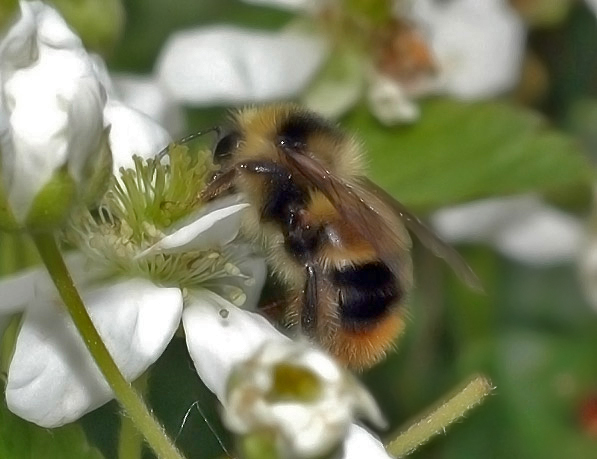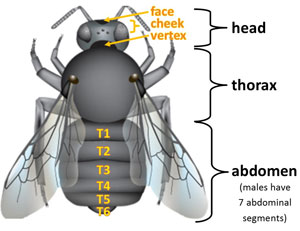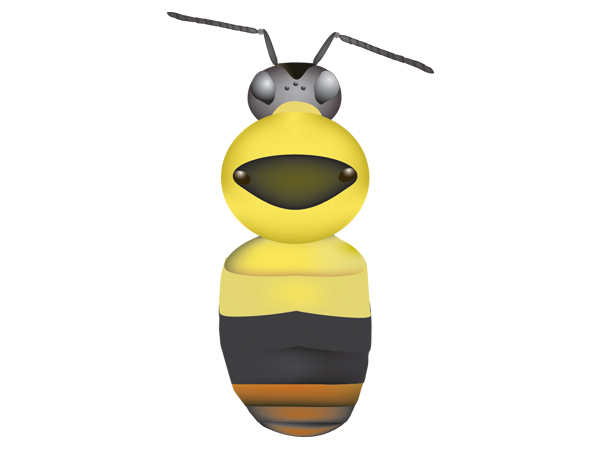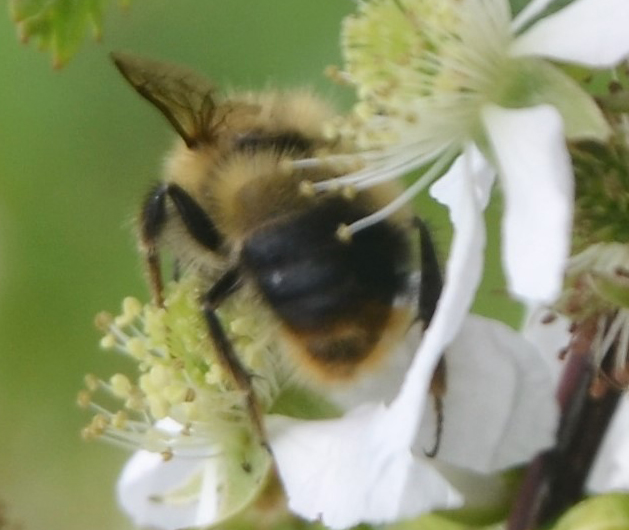
Status-Global/State:

Identification:
- Worker – Face black or with some short yellow hairs intermixed and yellow vertex. Thorax yellow with black band between the wingpads and yellow on the sides past the wingpads. Abdominal segments T1-2 mostly yellow, T3 black, T4-5 orange, and T6 black.
- Queen/gyne – Similar to workers, but are larger and appear earlier in the season. Some morphs have intermixed hairs on the face and back half of abdominal segment T2 black.
- Male – Similar to workers except with intermixed hairs on the face and abdominal segments T1-2 mostly yellow, T3-5 and sometimes T6 black, and T7 orange.
- Other distinguishing features – Small bee with long and uneven hair.
Similar Wisconsin Species:
Similar bumble bee species in Wisconsin are the half-black bumble bee (Bombus vagans) and the Sanderson's bumble bee (B. sandersoni) (Williams et al. 2014).
Description of Habitat/Range:
Known habitats include boreal forest (Williams et al. 2014). Nests have been found both underground and on the ground surface (Williams et al. 2014).
Nectar Plants
The frigid bumble bee is a medium-tongued species (Williams et al. 2014). Nectar plants include Cirsium (thistles), Epilodium, Geranium, Hedysarum, Lupinus, Mertensia (bluebells), Potentilla, Salix, Taraxacum officinale (dandelion), Trifolium (clovers), and Vaccinium (blueberry) (Williams et al. 2014, Colla et al. 2011).
Data from verified B3 observations [updated 2/28/2024].
Flight Season:
In Wisconsin, observation records have been made in June. Range-wide, too few records are known to document a flight season.
Literature Cited:
Colla, S., Richardson, L. and Williams, P. (2011) Bumble Bees of the Eastern United States. A product of the USDA Forest Service and the Pollinator Partnership with funding from the National Fish and Wildlife Foundation.
Hatfield, R., Jepsen, S., Thorp, R., Richardson, L. & Colla, S. 2014. Bombus frigidus. The IUCN Red List of Threatened Species 2014: e.T44937790A69002715.
Williams, P.H., Thorp, R.W., Richardson, L.L. and Colla, S.R. (2014) The Bumble bees of North America: An Identification guide. Princeton University Press, Princeton.






